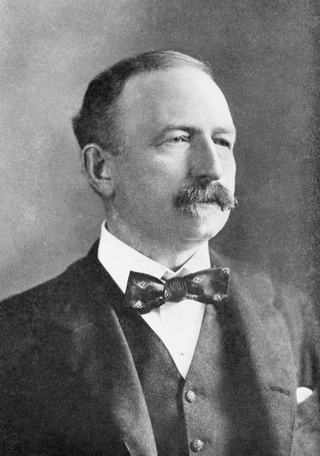Related Research Articles

The Canadian Pacific Railway, also known simply as CPR or Canadian Pacific and formerly as CP Rail (1968–1996), was a Canadian Class I railway incorporated in 1881. The railway was owned by Canadian Pacific Railway Limited, which began operations as legal owner in a corporate restructuring in 2001.

The Pacific Scandal was a political scandal in Canada involving large sums of money being paid by private interests to the Conservative government to cover election expenses in the 1872 Canadian federal election, to influence the bidding for a national rail contract. As part of British Columbia's 1871 agreement to join the Canadian Confederation, the federal government had agreed to build a transcontinental railway linking the seaboard of British Columbia to the eastern provinces.

Pierre Francis de Marigny Berton, CC, O.Ont. was a Canadian writer, journalist and broadcaster. Berton wrote 50 best-selling books, mainly about Canadiana, Canadian history and popular culture. He also wrote critiques of mainstream religion, anthologies, children's books and historical works for youth. He was a reporter and war correspondent, an editor at Maclean's Magazine and The Toronto Star and, for 39 years, a guest on Front Page Challenge. He was a founder of the Writers' Trust of Canada, and won many honours and awards.

Canada: A People's History is a 17-episode, 32-hour documentary television series on the history of Canada. It first aired on CBC Television from October 2000 to November 2001. The production was an unusually large project for the national network, especially during budget cutbacks. The unexpected success of the series actually led to increased government funding for the CBC. It was also an unusual collaboration with the French arm of the network, which traditionally had autonomous production. The full run of the episodes was produced in English and French. The series title in French was Le Canada: Une histoire populaire. In 2004, OMNI.1 and OMNI.2 began airing multicultural versions, in Chinese, Greek, Hindi, Italian, Polish, Portuguese, and Russian.

Wendy Jane Crewson is a Canadian actress and producer. She began her career appearing on Canadian television, before her breakthrough role in 1991 dramatic film The Doctor.

The Canadian Centennial was a yearlong celebration held in 1967 to celebrate the 100th anniversary of Canadian Confederation. Celebrations in Canada occurred throughout the year but culminated on Dominion Day, July 1. Commemorative coins were minted, that were different from typical issues with animals on each — the cent, for instance, had a dove on its reverse. Communities and organizations across Canada were encouraged to engage in Centennial projects to celebrate the anniversary. The projects ranged from special one-time events to local improvement projects, such as the construction of municipal arenas and parks. The Centennial Flame was also added to Parliament Hill. Children born in 1967 were declared Centennial babies.

Sir William Cornelius Van Horne, is most famous for overseeing the construction of the first Canadian transcontinental railway, a project that was completed in 1885, in under half the projected time. He succeeded Lord Mount Stephen as president of the Canadian Pacific Railway (CPR) in 1888. He was responsible for launching the sea transport division of the CPR, which inaugurated regular service between Vancouver and Hong Kong in 1891. He also presided over the expansion of the CPR into the luxury hotel business in the 1890s. He was also a prominent member of the syndicate that created the Cuba Railroad Company in 1900. He lived at the Van Horne Mansion in Montreal's Golden Square Mile.

The Big Hill on the Canadian Pacific Kansas City main line in British Columbia, Canada, was the most difficult piece of railway track on the Canadian Pacific Railway's route. It was situated in the rugged Canadian Rockies west of the Continental Divide of the Americas and Kicking Horse Pass. Even though the Big Hill was replaced by the Spiral Tunnels in 1909, the area has long been a challenge to the operation of trains and remains so to this day.
Fairmont Hotels & Resorts is a global chain of luxury hotel that operates more than 70 properties worldwide, with a strong presence in Canada.

John Colicos was a Canadian actor. He performed on stage and television in the United States and Canada.

Thomas George Shaughnessy, 1st Baron Shaughnessy, was an American-Canadian railway administrator who rose from modest beginnings as a clerk and bookkeeper for the Milwaukee and St. Paul Railroad to become the president of the Canadian Pacific Railway, serving in that capacity from 1899 to 1918. In recognition of his stewardship of the CPR and its contributions to the war effort during the Great War, Shaughnessy was elevated to the Peerage of the United Kingdom on 1 January 1916 as Baron Shaughnessy, of the City of Montreal in the Dominion of Canada and of Ashford in the County of Limerick.

The Algonquin Resort is a Canadian coastal resort hotel in the Tudor Revival style, located in St. Andrews, New Brunswick. An architectural icon of New Brunswick, the hotel is the most famous symbol of St. Andrews and one of the most photographed buildings in the province.
The South Simcoe Railway is a steam heritage railway in Tottenham, Ontario, north of Toronto. Operating excursions since 1992, it is the oldest operating steam heritage railway in Ontario and features the second oldest operating steam locomotive in Canada.

A ceremonial final spike was driven into the Canadian Pacific Railway (CPR) at Craigellachie, British Columbia, at 9:22 am on November 7, 1885. It was driven in by CPR railway financier Donald Smith, Baron Strathcona and Mount Royal, marking the end to a saga of natural disasters, financial crises, and even rebellion that plagued Canada's first transcontinental railway from its beginning.
The National Dream is a 1970 Canadian non-fiction book by Pierre Berton describing the planning and commencement of the Canadian Pacific Railway between 1871 and 1881.
The Last Spike is a 1971 Canadian non-fiction book by Pierre Berton describing the construction and completion of the Canadian Pacific Railway between 1881 and 1885. It is a sequel to Berton's 1970 book The National Dream. Both books formed the basis for the TV miniseries The National Dream.

Towards the Last Spike was written in 1952 by Canadian poet E. J. Pratt. It is a long narrative poem in blank verse about the construction of the first transcontinental railroad line in Canada, that of the Canadian Pacific Railway (CPR), from 1871 through 1885.

David Acomba is a Canadian television and film producer/director whose television programmes have been featured on CBS, ABC, PBS, CBC, CTV, BBC, Channel 4, Showtime, and HBO.
The Academy of Canadian Cinema & Television's 9th Gemini Awards were held on March 5, 1995 to honour achievements in Canadian television. The awards show, which was hosted by Paul Gross and Tina Keeper, took place at the Metro Toronto Convention Centre and was broadcast on CBC Television.

The history of the Canadian Pacific Railway dates back to 1873. Together with the Canadian Confederation, the creation of the Canadian Pacific Railway was a task originally undertaken as the "National Dream" by the Conservative government of Prime Minister John A. Macdonald. He was helped by Alexander Tilloch Galt, who was the owner of the North Western Coal and Navigation Company. British Columbia, a four-month sea voyage away from the East Coast, had insisted upon a land transport link to the East as a condition for joining Confederation, after initially requesting a wagon road.
References
- 1 2 "National Dream slated". Windsor Star. 22 February 1974. p. 17. Retrieved 23 May 2012.
- 1 2 "Rail-building Series Back". Leader-Post. 26 December 1975. Retrieved 23 May 2012.
- ↑ "A Historical Series On TV to Camouflage American Domination". The Forge. 20 May 1976. Retrieved 23 May 2012.
- 1 2 3 4 MacDonald, L. Ian (7 February 1974). "Too late for Van Horne's Dream". Montreal Gazette . p. 27.
- ↑ "The National Dream". curio.ca. Retrieved 6 September 2014.